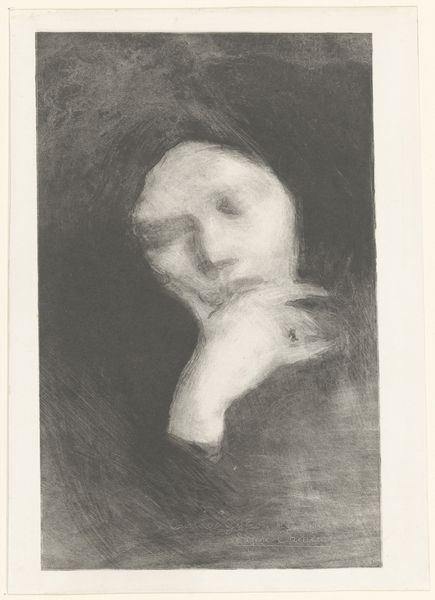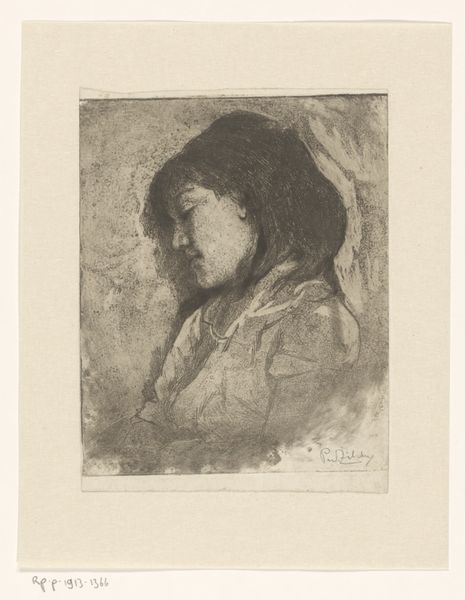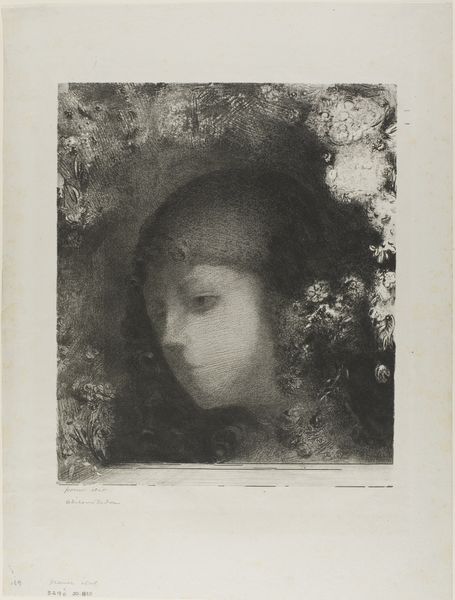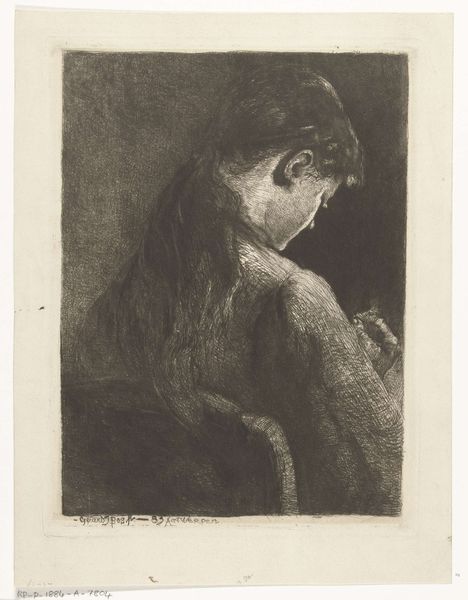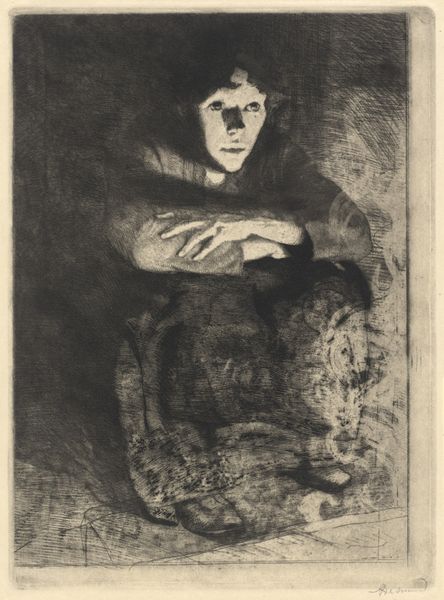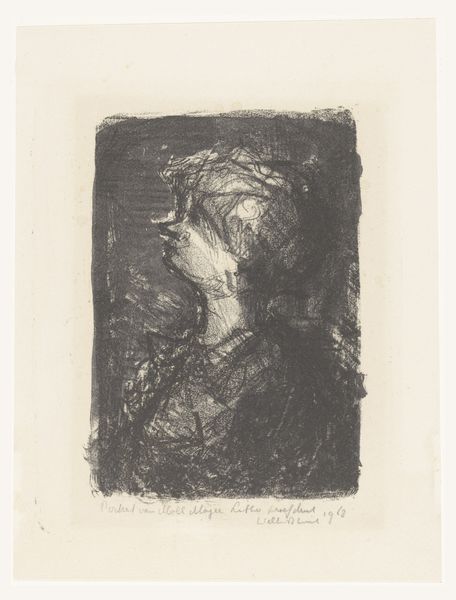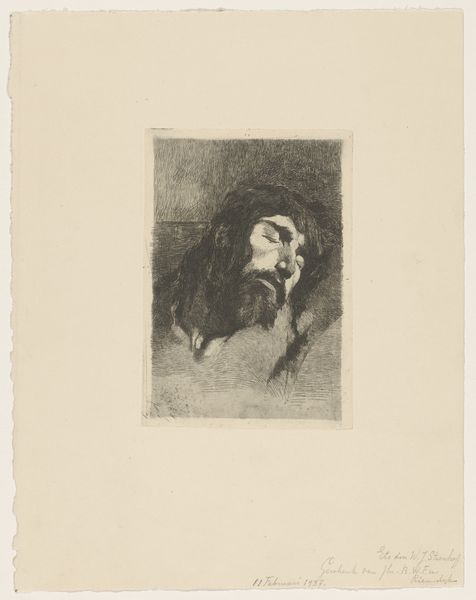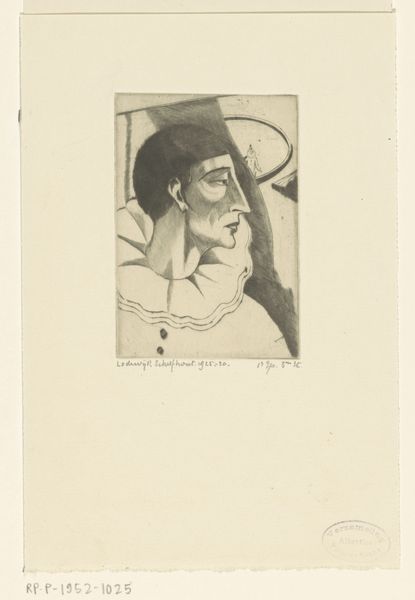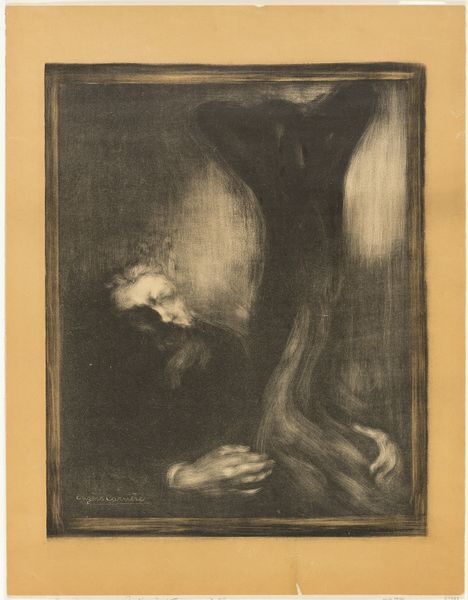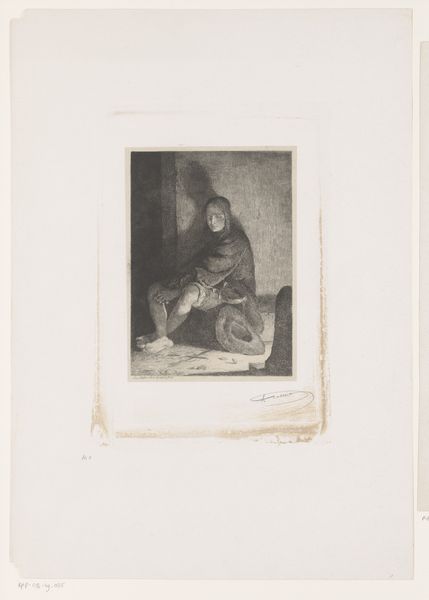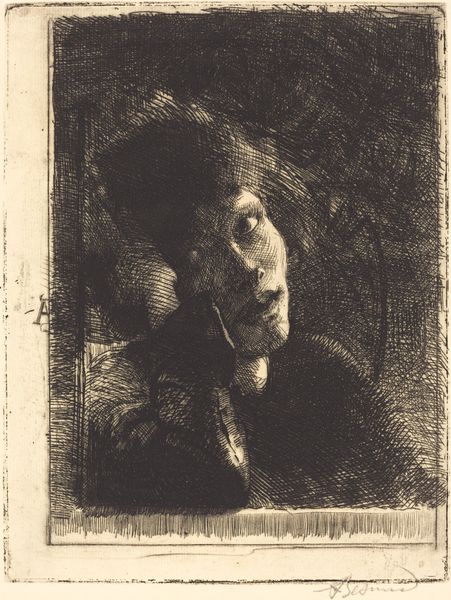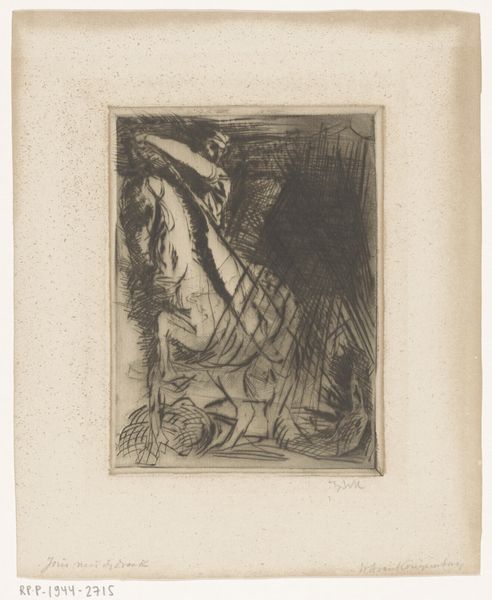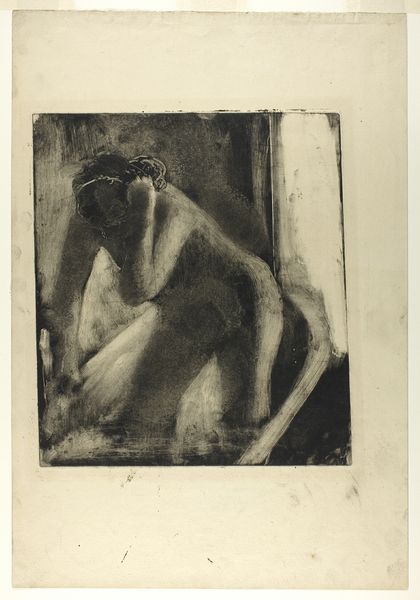
Anthony: "What is the object of all this?" The Devil: "There is no object!", plate 18 of 24 1896
0:00
0:00
drawing, lithograph, print, paper, ink
#
portrait
#
drawing
#
lithograph
# print
#
paper
#
ink
#
pencil drawing
#
france
#
symbolism
Dimensions: 308 × 250 mm (image); 310 × 250 mm (chine); 513 × 348 mm (sheet)
Copyright: Public Domain
Editor: Here we have Odilon Redon’s 1896 lithograph, "Anthony: 'What is the object of all this?' The Devil: 'There is no object!', plate 18 of 24," currently at the Art Institute of Chicago. The swirling ink on paper lends an unsettling quality. What's your interpretation? Curator: For me, this print isn’t just about illustrating Flaubert, but also about exposing the means of artistic production and the commercial context of Redon's work. He's using lithography, a printmaking process, to explore themes of doubt and existential crisis that plagued the late 19th-century bourgeoisie. It allows multiple impressions and affordable copies. We should consider how he is challenging established notions of artistic value by producing accessible multiples, inviting the masses to reflect on the philosophical turmoil initially reserved for the elites. Do you see how the deliberate choice of a mechanical reproduction method amplifies Redon's message about the democratization of ideas? Editor: I never considered the method itself as part of the meaning, but it makes total sense! Was lithography a popular method then, or was Redon making a conscious choice to go against traditional fine art expectations? Curator: Lithography was gaining traction due to its comparative cost-effectiveness and ability to capture the nuances of drawing. However, Redon elevated it from a purely commercial medium to a vehicle for expressing profound philosophical questions, bridging the gap between the artisanal labor of printmaking and the intellectual weight of symbolism. Consider also how printing inks as a material contrast against what it aims to portray, spiritual anguish. What are the implications of printing “spiritual anguish”? Is it then merely product? Editor: It really brings the artist's labor and the means of distribution to the forefront. It adds an unexpected layer to my understanding of this piece! Thanks so much for clarifying. Curator: My pleasure. Understanding the materials and their social context offers such insight into artwork, in unexpected ways!
Comments
No comments
Be the first to comment and join the conversation on the ultimate creative platform.
